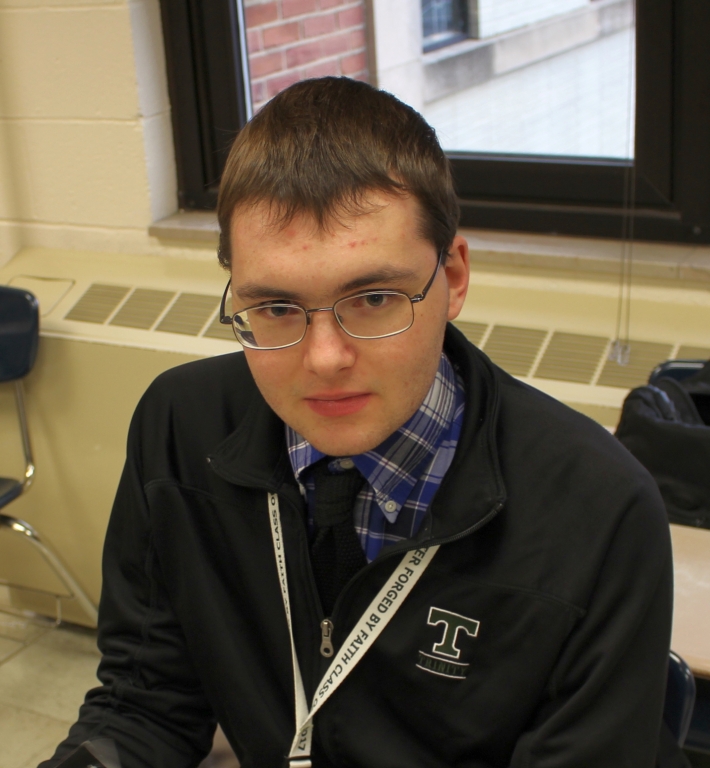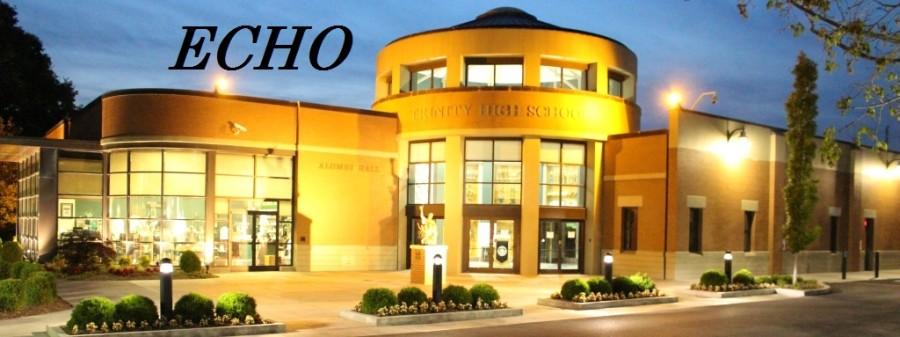Student Projects Examine The Holocaust
January 4, 2017
The Holocaust is one of the darkest events of human history, resulting in millions of deaths and some of the worst atrocities in human history. Trinity teacher Mrs. Betsy Darby’s students created projects last semester that reflected on the horrific event.
For The Holocaust class project, students had the choice of a number of methods — PowerPoint, poster board, Prezi, art, picture collage, tri-fold or a short documentary video.
The five topic choices were the following: What happened to Nazi leadership after the war? What atrocities did the Nazis carry out at Babi Yar? How did Nazis use propaganda to extend the divide between Jews and non-Jews? How did the Lebensborn program help extend the radical ideas of racial purity in Germany? and Explain the formation and role of the Einsatzgruppen.
Having assigned this project during three different semesters, Darby said it’s a way to understand how a group of people with terrible ideas can take over a country. She also views the project as a way to give students an opportunity to do their own research.

Trinity senior Alex Garbus
Darby said, “It’s a way for them to go more in-depth about how the Nazis came to power. It’s like a movie trailer. It gets them interested in extending their learning.”
One project that stood out was created by senior Alex Garbus, who focused on the Nazis use of propaganda to extend the divide between Jew and non-Jew.
Darby said Garbus’ project is “quite possibly the best student project I’ve seen in 13 years of teaching. Alex’s video is something I would expect at a college level.”
Another project that stood out was senior Noah Kulmer’s PowerPoint. She said, “It was a PowerPoint, but it was very visual. Photographs say 1,000 words. He used a lot of pictures of the people and what they were involved in.”
Garbus chose to create a video documentary for his project. He said, “I thought it would be more fun and create a better project.”
Garbus said the project took him a week or two to write the script and a day or two to edit. He did not run into many difficulties. He said, “The only thing that was hard to find was the animations part.”
The research for this project covers multiple facets of the propaganda used by the Nazis. Garbus said he “was intrigued by much of the research I found — like how they used propaganda to cover up killings. I was amazed how skillfully they covered up their crimes.”
Garbus said he thinks his video could be improved. He said, “I didn’t like how it was basically a slideshow. If I had time, I would add more video. The main thing I want is to improve the audio. I want to edit out my stumbles and clean the audio. I normally do this when I don’t have time constraints.”
Of his choice of medium, Kulmer said, “I’m used to PowerPoint, and it’s a lot easier to prepare than any other format.”
Kulmer said in doing the PowerPoint, which took about three hours to make, “I learned a lot, because I enjoyed what I was learning about, and finding new information wasn’t difficult.”
What Kulmer discovered bothered him. He said, “It stood out more to me to learn how (the Nazis) convinced people what they were doing was good. People believed the propaganda.”
Alex Garbus’ Holocaust video project:
https://www.youtube.com/watch?v=XTC24jAScyk&feature=youtu.be

